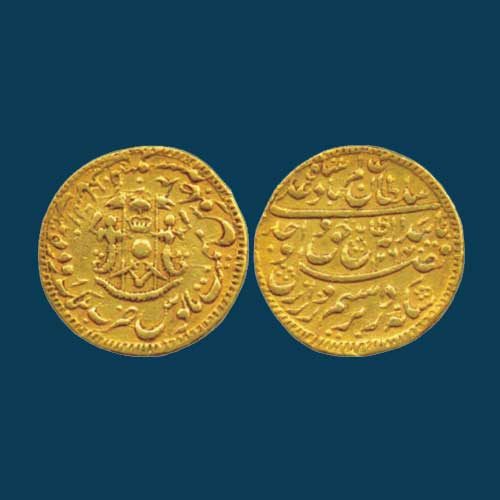Coinage of Awadh
2018-03-08 Thu
The history of Awadh depicts that in 1720, Muhammad Amin who was popularly known as Saadat Khan the Wazir of Mughal Empire, was made the Subhedar of Awadh. His dominion expanded from the divisions of Lucknow and Faizabad and the district of Ghazipur, Banaras, and Gorakhpur.A mint was opened at Banaras in 1737 under the name of Muhammadabad Banaras. The mint produced coins in the name of Mughal emperors under the authority of the Nawab of Awadh. After the annexation of Rohilkhand in the Awadh, administration coins were also issued from Bareilly. But all these were issued in the name of the Mughal emperor.
It was only in 1819 that Nawab Ghaziuddin Haidar finally started to strike coins in his own name. He introduced his coat of arms which depicted two fish facing each other surmounted by a crown and a tiger on either side holding a pennon as a support. He also placed his own legend in the form of a couplet.
The obverse legend in the form of a couplet remained the fashion on the coins of all the subsequent rulers namely Nasiruddin Haider, Muhammad Ali, Amjad Ali and Wajid Ali. At first, Ghaziuddin Haidar placed the year 5 on his new coins as the regnal year, counting it from the date of his accession to the 'nawabi'. But soon he abandoned it and renewed the regnal year from the date of his assumption of kingship. The coins issued during the first year of his kingship had the mint's name 'Dar-ul-Amarat Lucknow Suba Awadh'. From the second year, the epithet 'Dar-ul-amarat' was changed to 'Dar-ul-Sultanate'.
The entire five kings issued gold ‘Ashrafi’ with its half, quarter, eighth and sixteenth parts. Similarly, five denomination of silver rupee were issued by them. In copper, the first ruler issued only ‘falus’.
Image Courtesy: Classical Numismatic Gallery
Latest News
-
Mahatma
2024-04-25 ThuIndia Post issued a commemorative postage stamp on #LalaHansraj, also known as Mahatma Hansraj for�...
-
Berar Mint of Muhammad Akbar
2024-04-25 ThuBerar was a kingdom located in the Deccan region, with Elichpur as its capital. It was one of the Su...
-
Janma Kalnayak of Bhagwan Mahavir
2024-04-24 WedOn 21st April 2024 which was the 2550th Janma Kalnyanak of Bhagwan Mahavir Swami, PM Modi unveile...
-
Gold Pagoda of Vijaynagar Empire King Deva Raya I
2024-04-10 WedKing Deva Raya I of the Vijayanagara Empire was a patron of Kannada literature and architecture. He ...
-
Silver Denarius of Septimus Severus
2024-04-05 FriLucius Septimius Severus served as the Roman emperor from 193 to 211 AD. Severus sat on the throne o...

